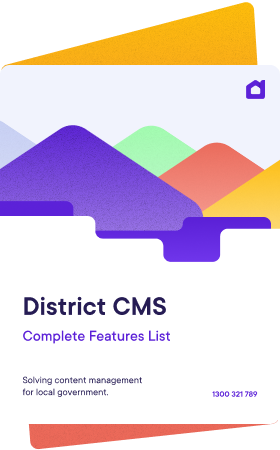Engagement data shows you how successful your project is. But it can also help inspire and motivate your stakeholders.
In this article, we'll explore best practices for understanding and interpreting engagement data, and look at how we can use those insights to motivate stakeholders to drive a community engagement project forward.
Understand your data sources
Before you dive into the data you've gathered from your community engagement project, it's important take a moment to identify and understand your data sources.
The data collected from surveys, polls and other participation tools is just one source. Consider all the various channels where community members have provided feedback: social media interactions, community meetings, discussion panels, door-knocking and face-to-face surveys.
A hybrid of online and offline engagement tools is useful for extending your outreach to different corners of the community, but it is important to maintain a single source of truth for your data.
Handy hint: Whatever the source, make sure you upload your data into a consistent format for easy analysis.
Recognising the context and the type of data collected helps set the stage for accurate interpretation.
Establish clear objectives
Interpreting data without clear objectives is like navigating without a compass. Define what success looks like for this community engagement project. Are you aiming for increased participation, improved stakeholder satisfaction, or specific feedback on a project? Clear objectives guide your data analysis and help you focus on metrics that matter.
Quantitative analysis
Quantitative data analysis involves examining numbers and statistics to identify trends and patterns. Use your community engagement platform’s reporting dashboard tools to aggregate data, create visualisations, and perform statistical analysis.
Digital engagement platforms can give you information on a variety of metrics, such as:
- Participation rates
- Inclusion and representation
- Reach and exposure
- Quality of engagement
Your data will reveal patterns in participation rates, demographic information, and feedback scores.
By quantifying your engagement efforts, you can provide stakeholders with concrete evidence of community involvement and sentiment.
Qualitative insights
While numbers are informative, the stories behind them are equally important.
Qualitative data analysis helps you understand the 'why' behind the numbers.
Analyse open-ended survey responses, comments, and online and offline discussions to gauge community sentiment, concerns, and suggestions. Thematic analysis can be particularly useful in identifying common themes and narratives that emerge from the data.
While this type of data analysis can be time-consuming, emerging AI tools are simplifying these processes and using sentiment analysis to identify positive and negative feedback.
Benchmarking and comparison
Benchmarking involves comparing your engagement data against previous campaigns or industry standards to gauge performance.
By highlighting progress or identifying areas for improvement, benchmarking can be a powerful tool to motivate stakeholders.
It's also important to compare data across different demographics or regions: it can help you uncover valuable insights into the needs and preferences of different communities.
Data visualisation
A picture is worth a thousand words, and this holds true for data interpretation. Transform your engagement data into compelling visualisations such as charts, graphs and heat maps to share with the community and other stakeholders, to show how the engagement project is tracking.
Visual representations make data more accessible and understandable, and can help stakeholders quickly grasp key findings and insights.
Effective data visualisation can significantly enhance stakeholder engagement and understanding, while keeping communities informed.
Actionable recommendations
Any data interpretation should result in actionable recommendations. Based on your analysis, suggest concrete steps that can be taken to improve future community engagement efforts.
Whether it's adjusting your outreach strategy, addressing specific community concerns, or introducing new engagement channels, your recommendations should inspire stakeholders to take action.
Share your story
Finally, communicate your findings and recommendations to your stakeholders in a clear and compelling manner. Use storytelling techniques to craft a narrative that highlights key insights, celebrates successes, and outlines the path forward. By sharing the story behind the data, you not only inform, but you also close the feedback loop. This not only will inspire your stakeholders to remain invested in the community engagement journey, but it will also help to build a sense of closure and trust with community members who participated in the engagement project.
Interpreting engagement data is an art and science that requires a strategic approach and a keen understanding of your community's pulse. By following these best practices you can transform raw data into meaningful insights that resonate with stakeholders and fuel your community engagement initiatives.
District Engage transforms community engagement
District Engage offers a comprehensive suite of engagement tools, including surveys, polls and interactive mapping. The platform helps project managers to reach diverse audiences and capture nuanced perspectives.
By leveraging these features, practitioners can enhance accessibility, streamline communication, and foster meaningful interactions within their communities.
Want to find out more about District Engage? Please contact our team to find out more about our platform, tools and resources. You can also request a demo, or register for a free trial. Have a chat to our team today.




